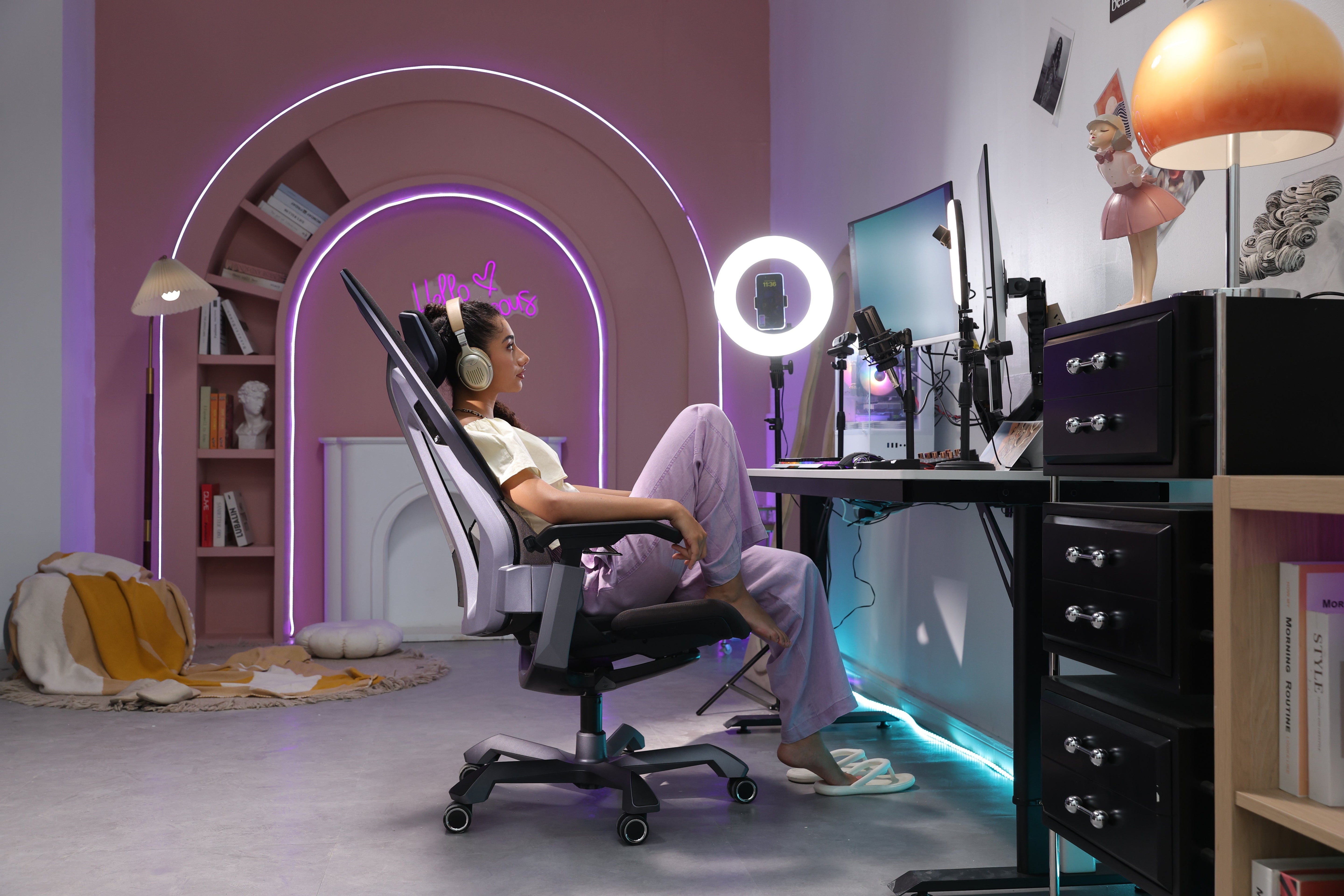

This site uses cookies for better user experience and analytics.

Long gaming sessions are fun, but they can take a serious toll on your back, shoulders, and overall energy levels. Whether you're grinding ranked matches, streaming, or casually playing with friends, poor posture and lack of movement can lead to back pain, stiffness, and fatigue.
The good news ? You don’t have to sacrifice comfort for performance. Here’s how to protect your body and game longer without discomfort.
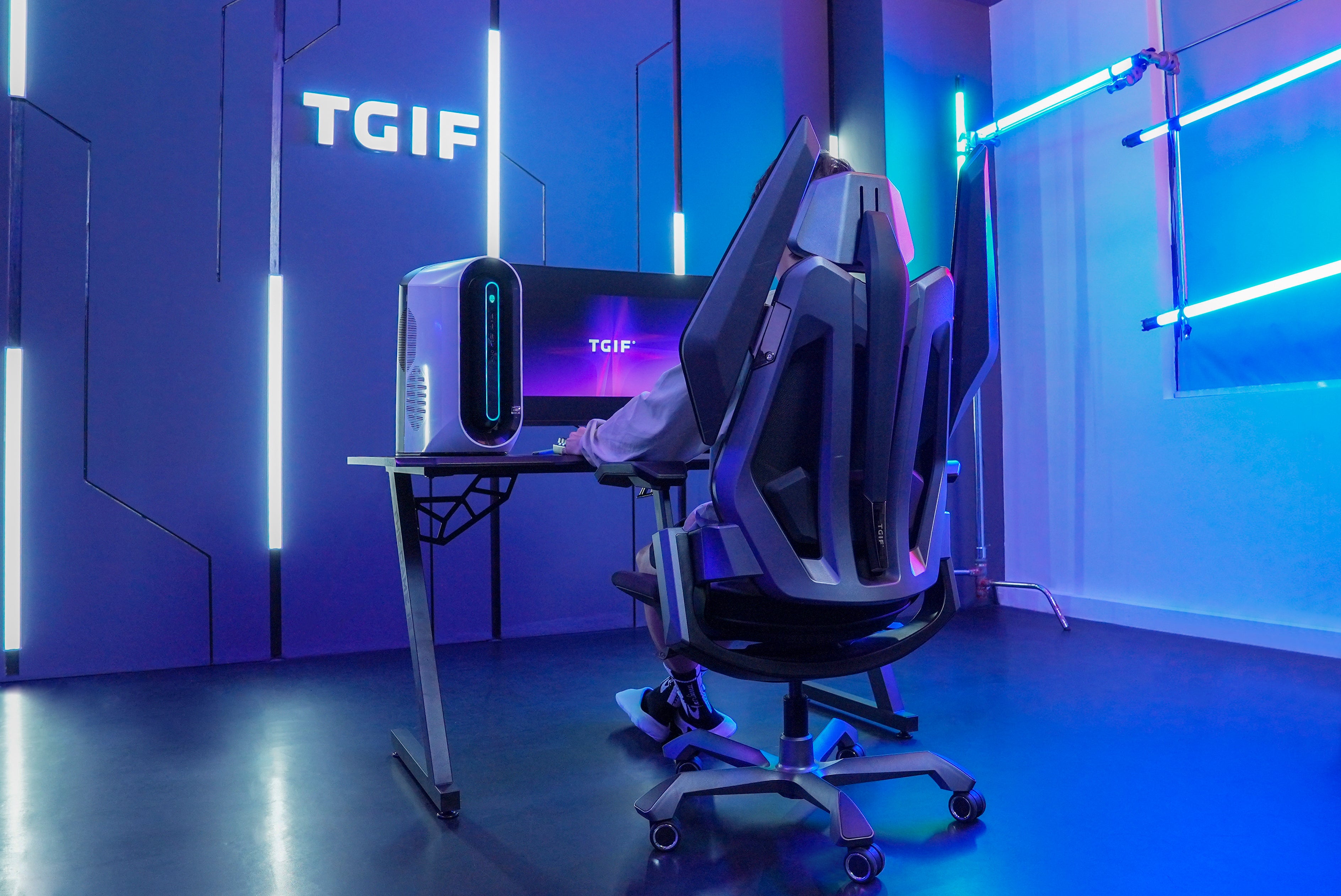
The chair you sit in makes all the difference when it comes to avoiding back pain. A proper ergonomic gaming chair supports your spine, shoulders, and lumbar region, reducing strain over long sessions.
Look for these key features :
Chairs like the TGIF ACE & T0 feature adaptive lumbar support, keeping you comfortable no matter how long you play.
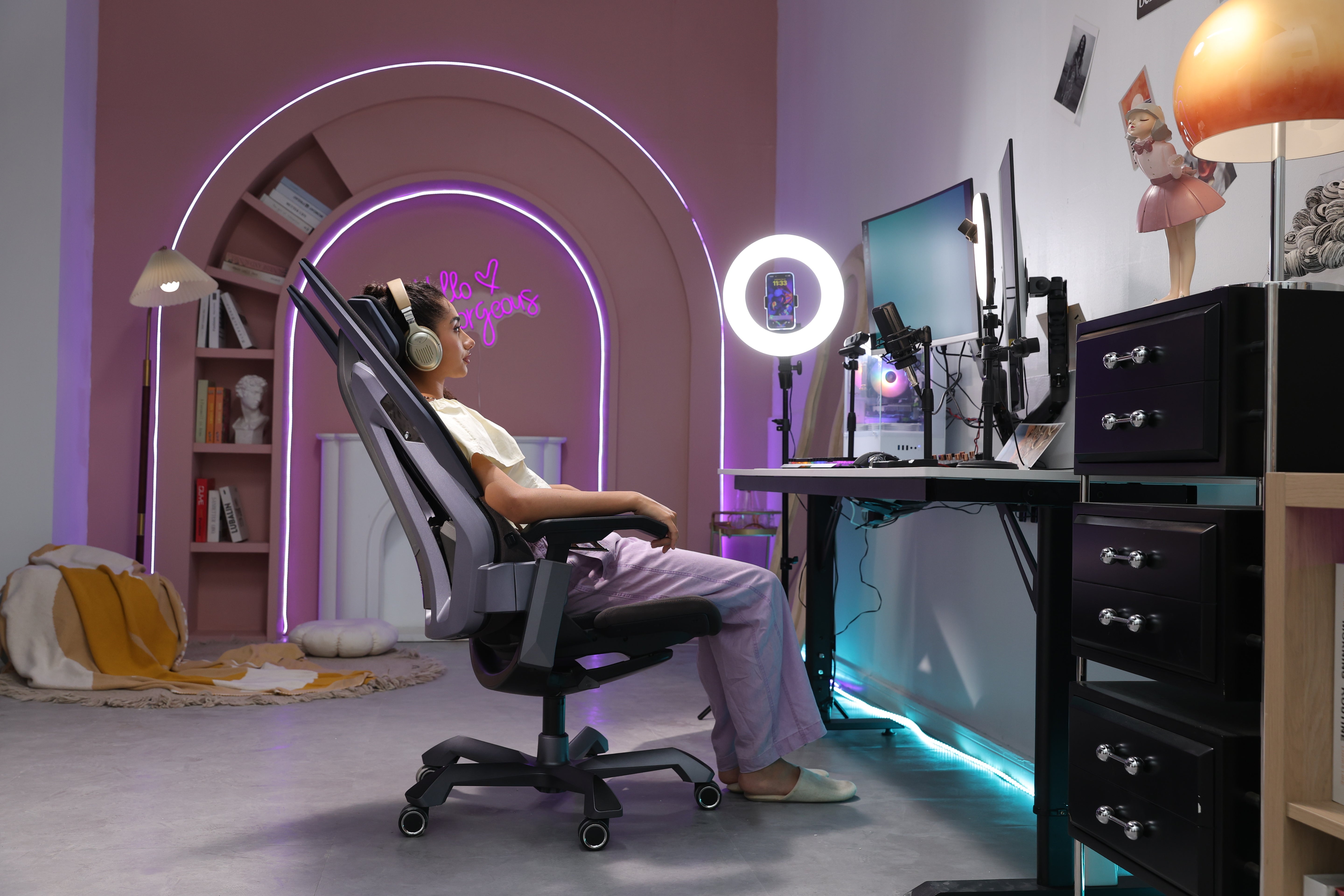
Even the best chair won’t help if you sit incorrectly.
Here’s the ideal gaming posture :
If your feet don’t reach the floor comfortably, use a footrest.
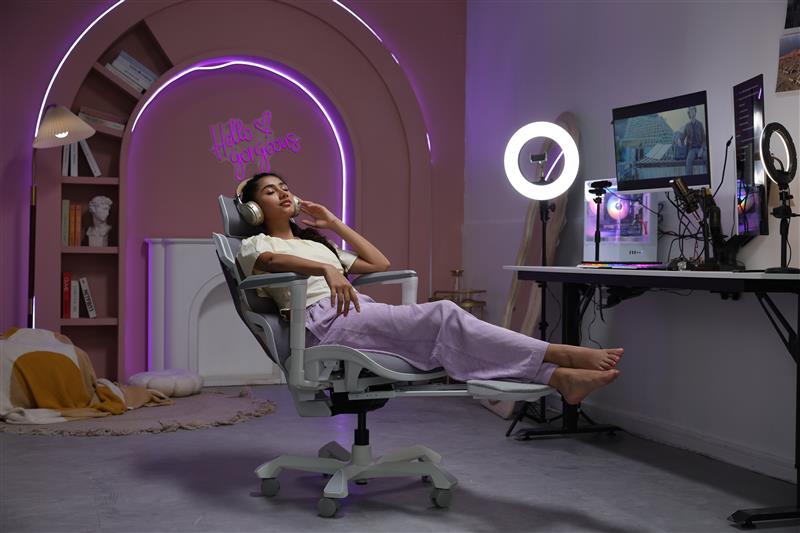
Sitting for hours causes stiffness and poor circulation, leading to back pain and fatigue. Follow the "50-10 Rule" :
Try these quick stretches :
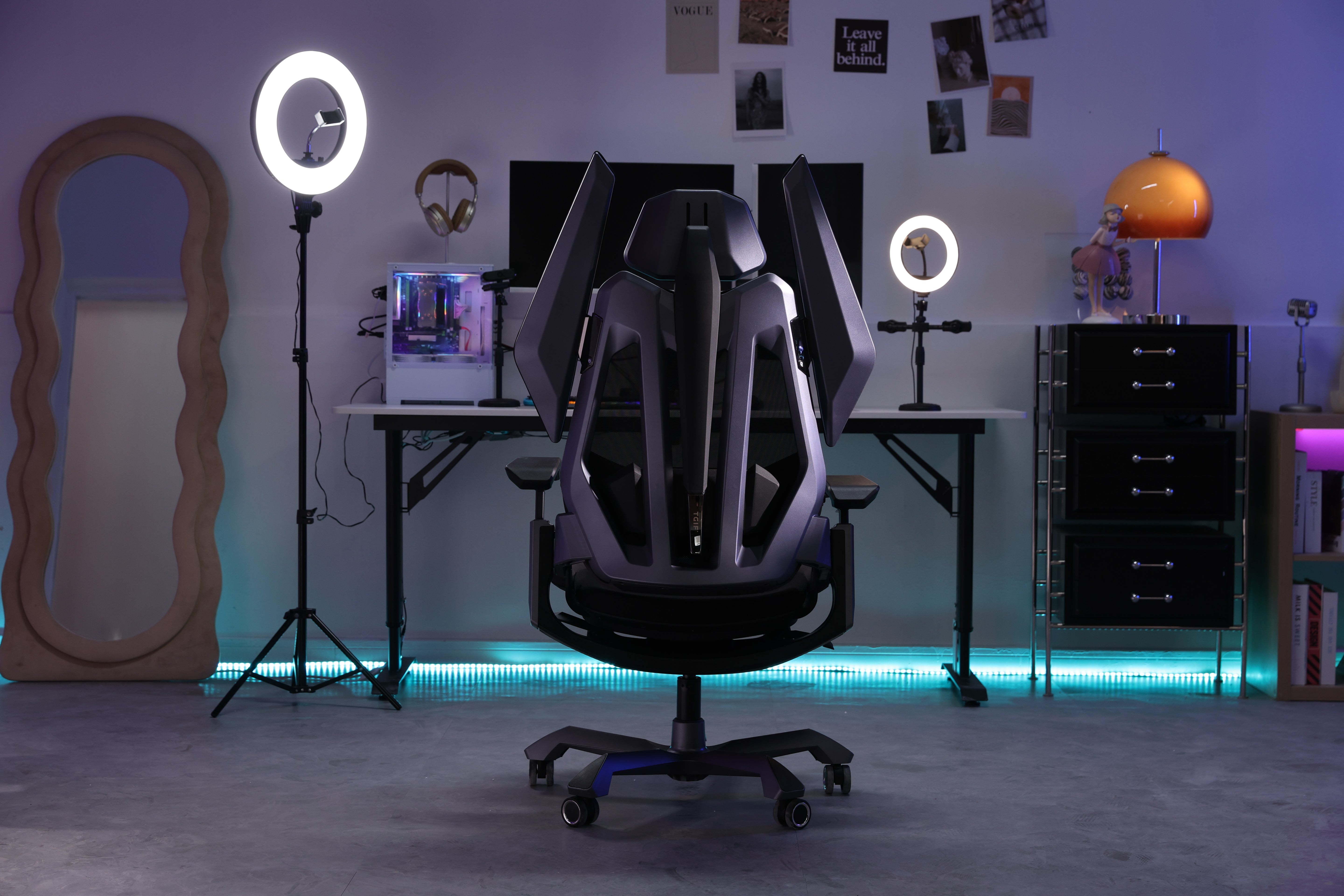
Poor desk and monitor positioning can force your body into unnatural postures, leading to back pain and strain.
Optimize your setup with these adjustments :
Ensure your desk is at the correct height : Elbows should be at a 90° angle when typing.
If your chair’s height isn’t adjustable, use a monitor riser or a height adjustable desk.
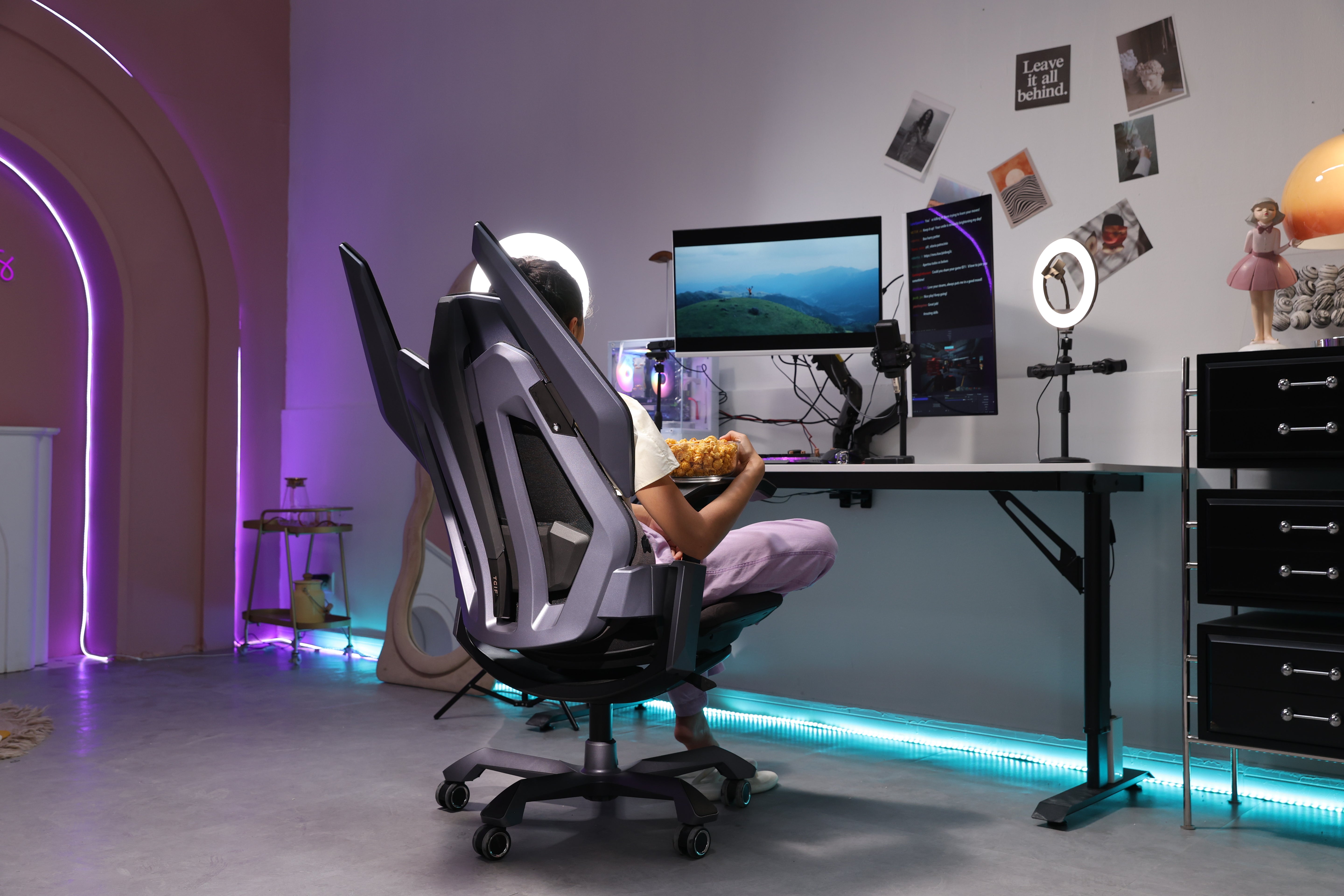
Fatigue isn’t just caused by sitting, it’s also a result of dehydration and poor nutrition. If you game for long hours, fueling your body properly is key to maintaining focus and endurance.
Gaming hydration & nutrition tips :
Stretch & move while drinking water : Prevents stiffness and keeps circulation going.
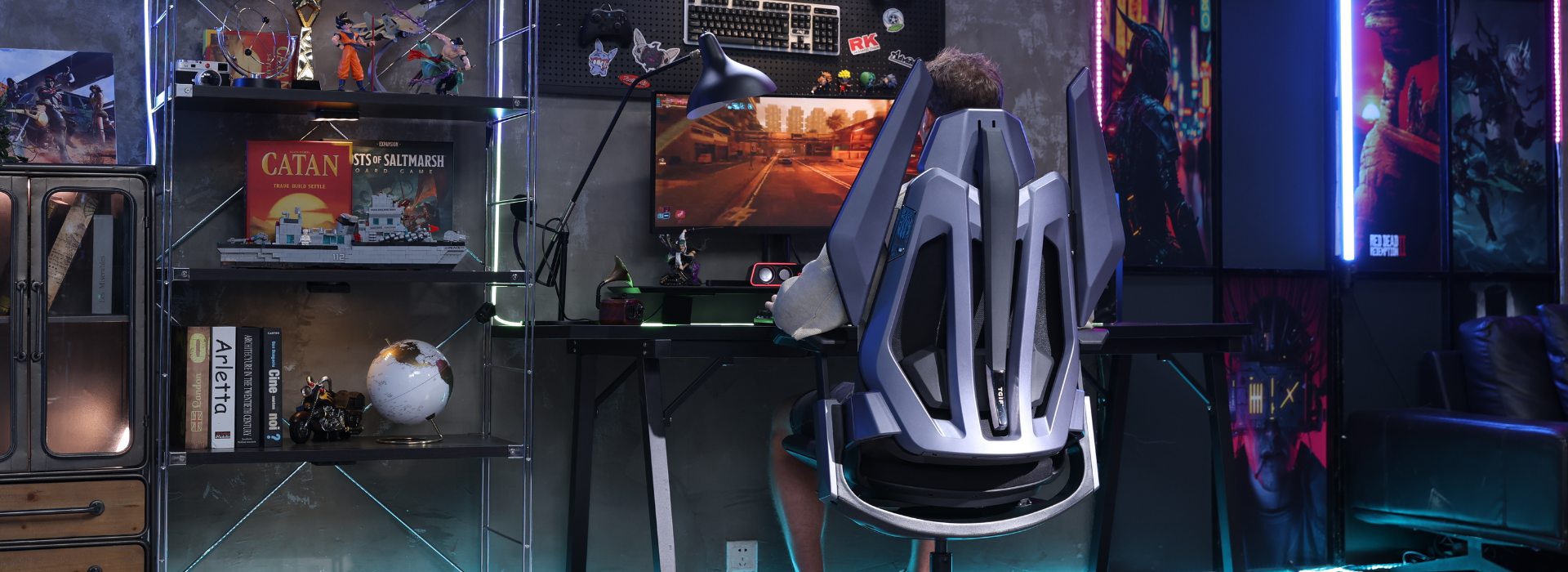
Back pain and fatigue shouldn’t be a side effect of gaming. By investing in the right ergonomic chair, improving your posture, taking breaks, and optimizing your setup, you can game longer and perform better, without discomfort.
Looking for the perfect gaming chair ? Check out TGIF Gaming Chairs for top-tier comfort and support!
What’s your go to tip for staying comfortable during long gaming sessions ? Drop your thoughts below!
Product Questions
The TGIF T0 is our flagship ergonomic chair, designed to offer exceptional support, adaptability, and long-term comfort.. Equipped with our patented dynamic seat-back sync, it follows the natural movement of your spine and delivers continuous lumbar support, thanks to its dual lumbar system. Its pressure-relieved seat cushion, Mecha-Wing backrest, and 3D adjustable armrests make it ideal for intense work or gaming sessions.
The ACE Series, on the other hand, builds upon the T0’s foundation and adds premium customizability. It includes an adaptive independent lumbar support system, a holographic cicada wing backrest for enhanced airflow and visual impact, and is available with either 3D or 6D robotic armrests for even finer adjustments. The ACE Home model also features a hidden retractable leg rest, allowing you to kick back and relax between games or tasks.
What color options are available for each model?
The TGIF T0 is available in four color options: Blue, Red, Black, and Grey.
The TGIF ACE comes in two sleek and premium color choices: Black and White.
Both models are designed with high-quality materials and finishes, ensuring durability and style in every color.
TGIF T0 : 150 kg
TGIF ACE : 125 kg
Yes! Both TGIF T0 and TGIF ACE gaming chairs offer adjustable armrests and backrests for maximum comfort and customization.
Armrest Adjustability:
Backrest Recline:
Both TGIF T0 and TGIF ACE reclines up to 140° for relaxed gaming or resting
Both models are designed to adapt to your movements, ensuring the perfect posture for gaming, working, or relaxing.
Yes! Both TGIF T0 and TGIF ACE are designed for prolonged use, whether you're gaming for hours or working in a professional setup.
Why They’re Ideal for Long Sessions:
Whether you’re in a competitive gaming session or working from home, TGIF chairs provide the support and comfort needed for extended use.
TGIF T0 :
TGIF ACE :
Yes! TGIF gaming chairs are designed to accommodate tall individuals while ensuring optimal comfort and posture support.
Why They’re Great for Tall Users:
Model Recommendations for Tall Users:
For maximum comfort, tall users should ensure their feet rest flat on the floor or use a footrest if needed.
TGIF gaming chairs come equipped with several built-in features designed to enhance your comfort and gaming experience. While there isn't a separate line of accessories for customization, the chairs themselves offer :
These integrated features are designed to provide a customizable and comfortable seating experience without the need for additional accessories.
This is due to the back pressure unlocking mechanism. To prevent sudden movement, you need to lean back slightly after unlocking the backrest.
The Dynamic Seat-Back Sync™ mechanism automatically adjusts to your posture, providing continuous lumbar support without requiring manual adjustments. This ensures better lower back comfort than traditional adjustable lumbar supports.
Shipping & Delivery
TGIF offers fast and reliable delivery across Europe !
Delivery Times:
Need more details ? Contact our support team for order-specific tracking !
TGIF currently delivers only within Europe!
We offer free shipping across Europe, ensuring a smooth and hassle-free experience for our customers. At this time, we do not ship outside of Europe.
Need more details ? Feel free to contact our support team for any shipping-related questions!
Currently, TGIF only ships within Europe.
At this time, we do not offer international shipping outside of Europe. However, we are always looking to expand our reach in the future!
For updates on shipping availability, stay tuned or contact our support team for more details!
Yes, you can modify your delivery address after placing an order, but only if the order has not yet been processed for shipment.
How to Request an Address Change:
Need to update your address ? Reach out to our team immediately for assistance!
Once your TGIF order has been shipped, you will receive a tracking link via email.
How to Track Your Order :
Haven’t received your tracking link ? Contact our support team, and we’ll be happy to assist you !
If your TGIF chair arrives damaged or defective, we’re here to help !
Steps to Take:
Customer satisfaction is our priority ! If you experience any issues, reach out to our support team, and we’ll resolve it as quickly as possible.
Ordering & Payment
We offer a wide range of secure online payment methods to make your shopping experience as smooth as possible. You can pay using credit cards (Visa, MasterCard, Eurocard, iDeal), bank transfer, or popular payment services like Bancontact and Paysafecard.
Additional payment methods may also be available depending on your location, just check the options at checkout!
Please note that we are unable to accept payments outside of the methods listed on our website.
Not yet, but we're working on it!
Our team is currently exploring flexible payment solutions to make it even easier to shop with us.
If you’d like to be the first to know when installment options go live, feel free to subscribe to our newsletter or follow us on social media.
Yes, you can modify or cancel your order, but only if it has not yet been processed for shipment.
How to Modify or Cancel Your Order :
Need assistance ? Reach out to our team immediately for support !
Yes ! You will receive an order confirmation via email immediately after completing your purchase.
What’s Included in the Order Confirmation ?
If you don’t receive your confirmation email within a few minutes, check your spam folder or contact our support team for assistance!
Yes, all displayed prices on our website are inclusive of VAT.
The price you see is the final price you pay, with no hidden taxes or additional VAT charges at checkout.
If you need an invoice with VAT details, feel free to contact our support team after your purchase!
Returns & Refunds
Yes! You can return your TGIF chair if it doesn’t suit you.
Return Policy :
To start a return, contact our support team with your order number, and we’ll guide you through the process!
You have 14 days to return a product after delivery.
Return Policy :
To initiate a return, contact our support team with your order number, and we’ll assist you with the process !
Good news! Once your return has been approved by our customer service team, we’ll cover the return shipping costs.
You’ll receive a prepaid return label via email, which you can simply attach to your parcel before dropping it off.
Refund Process After a Return
Once we receive your returned chair, our team will inspect it to ensure it meets our return conditions. The refund process follows these steps:
Need more details? Contact our support team for updates on your return and refund status!
What to Do If You Receive a Defective or Incorrect Product
If your TGIF chair arrives defective or incorrect, we will resolve the issue as quickly as possible.
Steps to Take:
Your order number
Photos or videos of the issue
A brief description of the problem
4. Our team will arrange a solution : Depending on the issue, we may offer:
A replacement chair or part
A refund if necessary
Free return shipping if the issue is confirmed
Customer satisfaction is our priority! Reach out to our support team as soon as possible, and we’ll make it right.
Warranty & Support
TGIF Chair Warranty Period
All TGIF gaming chairs come with a warranty to ensure durability and quality performance.
Manufacturing defects in the frame, base, and mechanism
Issues with adjustable features (recline, armrests, lumbar support)
Faulty materials that affect functionality
Normal wear and tear
Accidental damage, improper use, or modifications
Fabric or PU leather deterioration due to prolonged use
Need to make a warranty claim ? Contact our support team with your order number, photos of the issue, and a brief description. We’ll assist you in finding the best solution!
If you experience an issue covered under warranty, follow these steps to initiate a claim:
1. Gather the Necessary Information
2. Contact Our Support Team
3. Warranty Evaluation & Resolution
Need assistance ? Contact us anytime, and we’ll make sure you get the best possible support!
All TGIF chairs are covered by a 5-year warranty, so purchasing spare parts is usually unnecessary. However, if you require specific parts or accessories, please contact our customer service for assistance.
If you have any questions or issues with your TGIF chair, our support team is here to help!
Contact Options :
Need assistance? Contact us, and we’ll get back to you as soon as possible!
Maintenance & Durability
General Cleaning & Maintenance
Fabric Cleaning Process
No, the chairs are not waterproof or stain-resistant, but they are easy to clean :
Yes, you can!
Maintenance & Usage Tips
Usage Guidelines
B2B & Partnerships
Yes! TGIF provides tailored solutions for businesses, gaming organizations, and e-sports teams looking for high-quality gaming chairs in bulk.
Business & E-Sports Team Solutions :
How to Get a Quote ?
Fill in the form on the B2B partnerships page and we'll send you a quote by e-mail.
Looking to upgrade your office, gaming center, or e-sports team setup? Reach out to us today!
Yes! TGIF provides tailored solutions for businesses, gaming organizations, and e-sports teams looking for high-quality gaming chairs in bulk.
For orders of less than 500 chairs you can add your company logo on the chair and for orders of more than 500 chairs you can completely customise it.
How to Get a Quote ?
Fill in the form on the B2B partnerships page and we'll send you a quote by e-mail.
Looking to upgrade your office, gaming center, or e-sports team setup? Reach out to us today!
Requesting a bulk order quote is simple!
Special pricing available for bulk orders.
Customization options for branded chairs.
Fast response time from our business team.
Need more info? Contact us at tgif@e-squad.com
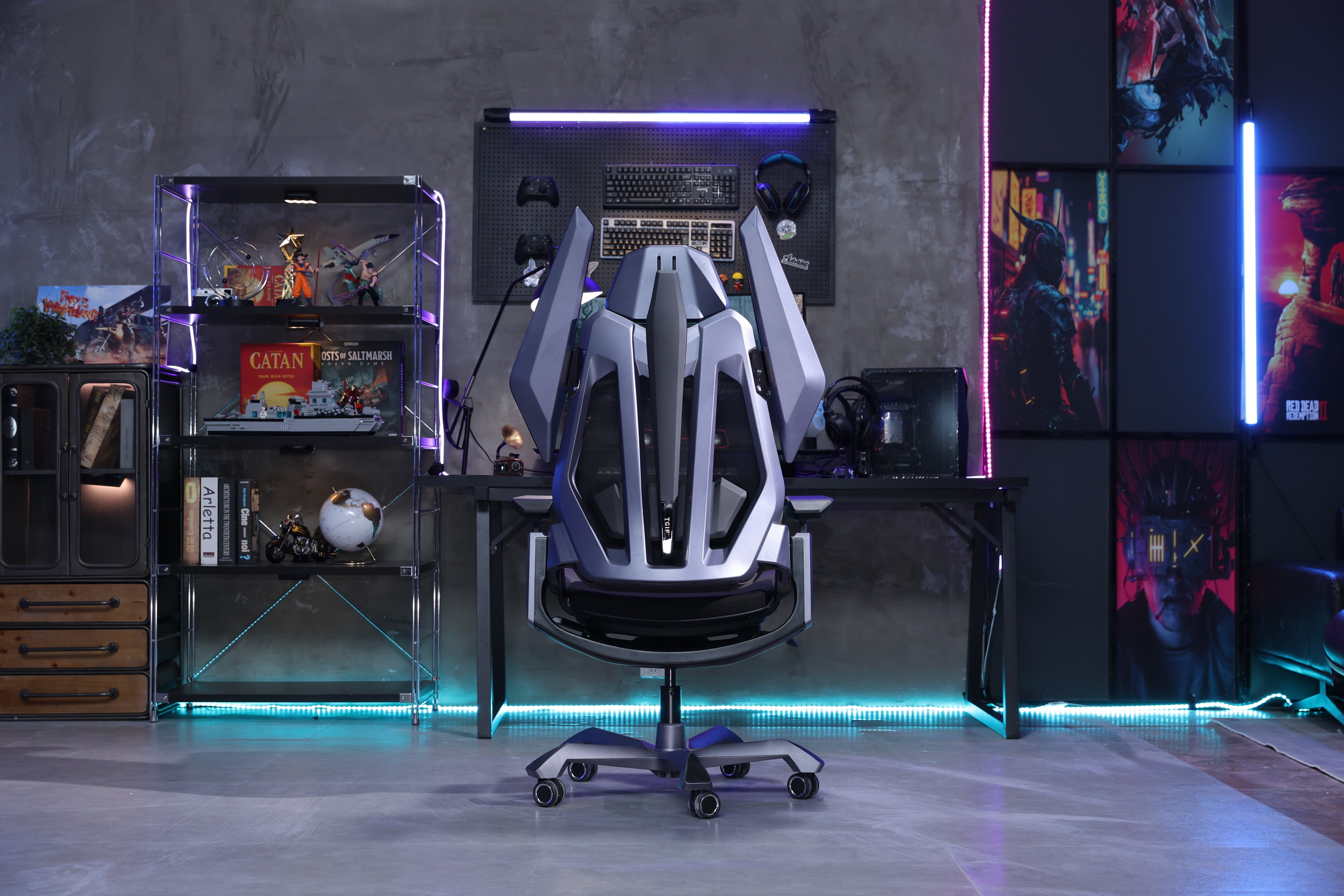
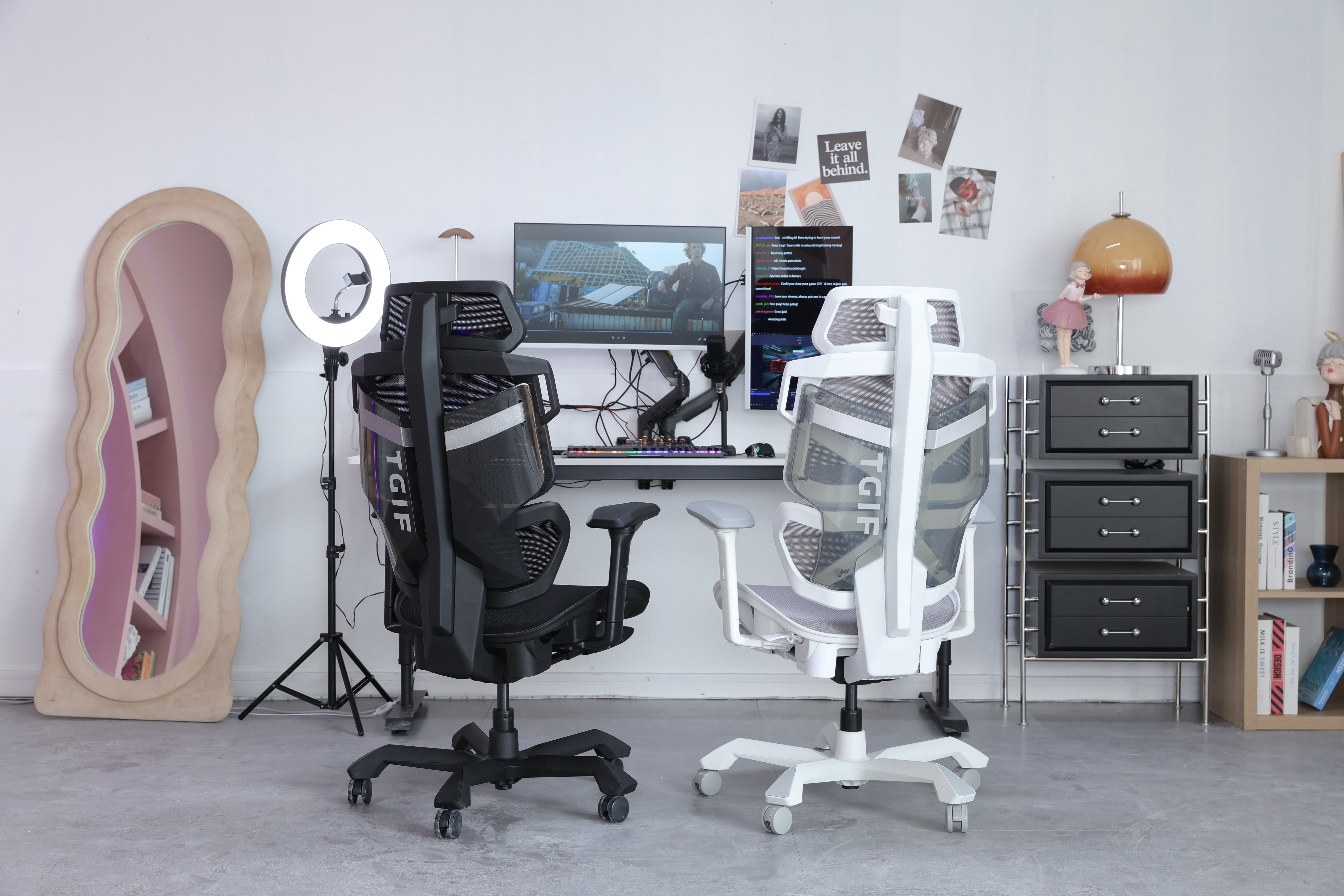
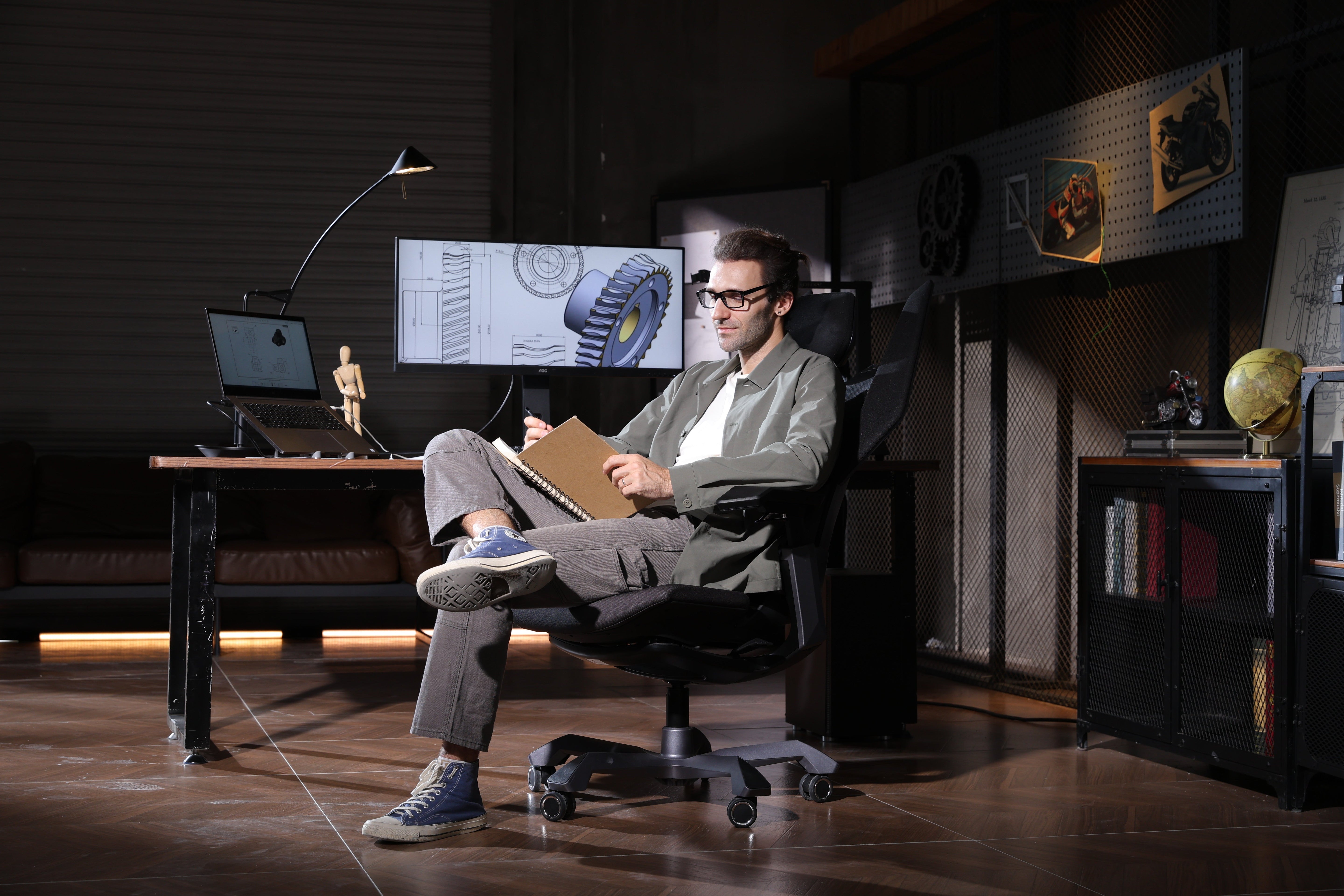

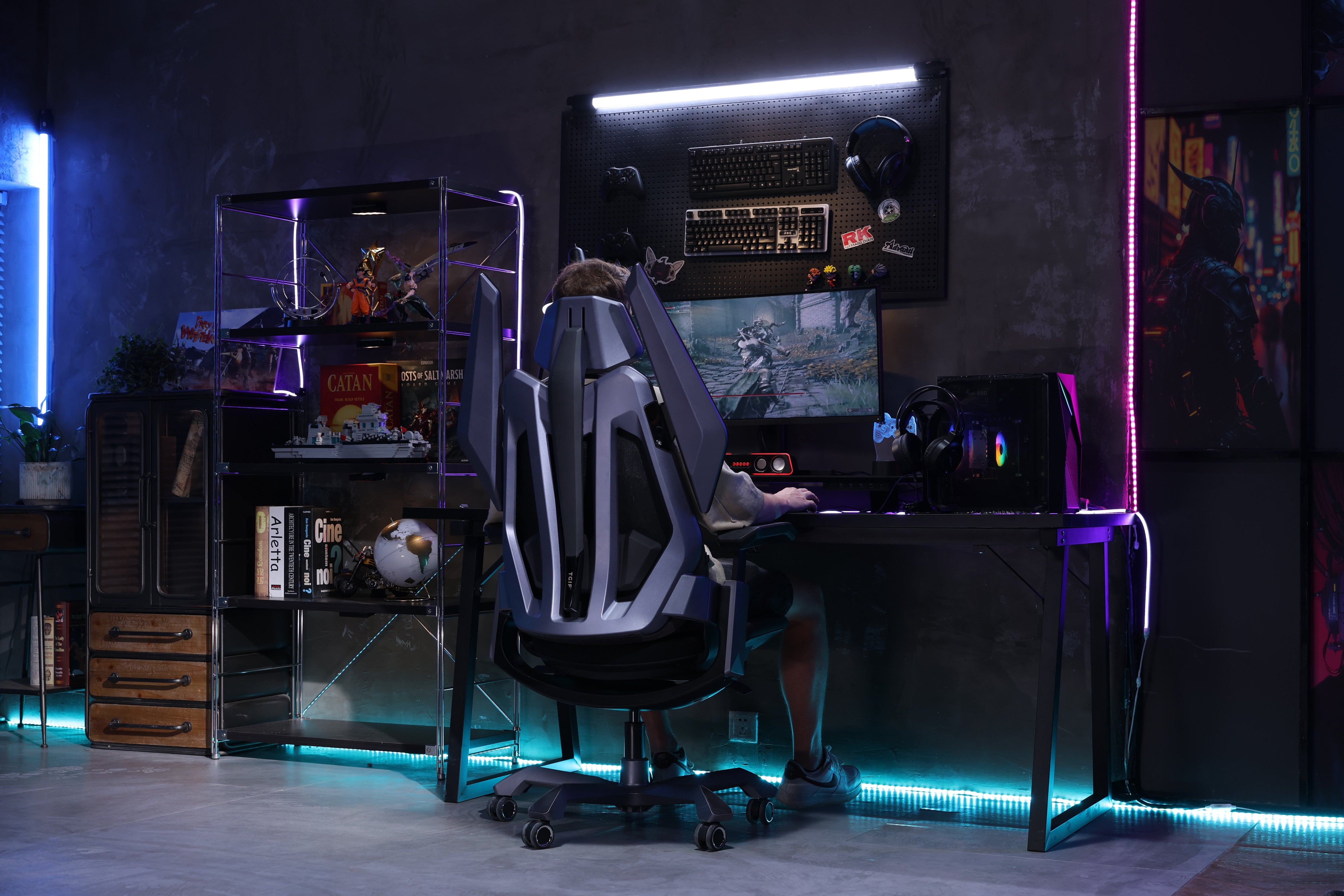
Share: